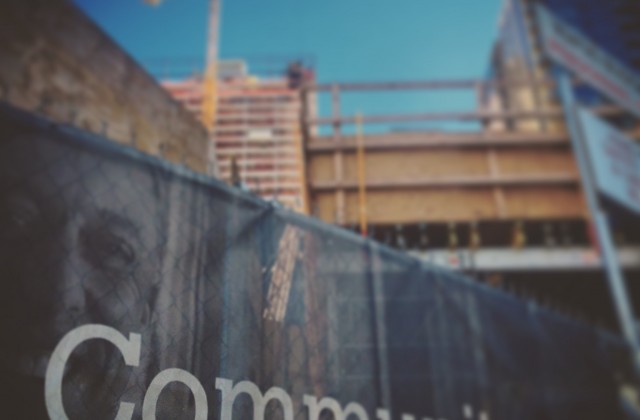Linkage Fee Dead: NIMBYs Can’t Hide Behind Social Justice Anymore
As I pointed out yesterday there are some truly bold and forward thinking ideas in the report of the Mayor’s Housing Affordability and Livability Agenda (HALA) Committee report. This is especially true when it comes to addressing Seattle’s longstanding view that single-family zones were off the table for more density. The HALA Report pushes that envelope. But it also cures the biggest headache of the last year, Councilmember O’Brien’s proposed linkage tax on new development. With a compromise between non-profit housing advocates, developers, and Councilmember O’Brien the HALA Committee has removed a major cover for NIMBY opposition growth, social and economic disparity created by growth that can only be offset by extracting fees from new housing.
By creating a trade between upzones for more housing in all multifamily zones and mandatory performance by including subsidized housing in the floor space created by additional density, the HALA creates a true compromise. The city gets more new housing in exchange for setting aside a percentage of those new units for a set number or percentage of rent restricted units. Here’s how it would work.
The City should: (1) boost market capacity by extensive citywide upzoning of residential and commercial zones; and (2) match this increased capacity with a mandate to build affordable housing in emerging market-rate buildings. To achieve these goals, this program will encourage market-rate housing developers to produce units versus paying a fee in lieu of performance.
The report suggests that a fee be assessed on commercial development to generate money to fund construction of new housing. Together, these two elements would produce about 6,000 new units at or below 60 percent Area Median Income (AMI).
Now, inclusionary zoning is a bad idea in principle because it simply subsidizes the affordable units at the expense of the remaining units. That just drives up housing prices in whatever isn’t restricted. However, there is an exchange of value in this proposal. There is more leasable space created because of the rezones. The devil is in the details though since if the inclusion requirement is too high people might not build anything. But this is a compromise that is really is a compromise. It isn’t punitive of new growth and the new affordable units will be created far more efficiently and we get more housing. And our builders end up giving something because they’ll have to include rent restricted units in their new projects affected by rezones.
Most importantly, the development community and the non-profit housing community are in agreement on this proposal as is Councilmember O’Brien. Now single-family neighborhood groups can no longer use affordability as cover for their protection of the status quo. How can an angry neighbor in a single-family neighborhood argue now that we shouldn’t have more housing in an urban village because the developer is “laughing all the way to the bank” because of the huge profits she is making. Not only will the developer be building affordable units efficiently but their projects will have the support of people who advocate for affordable housing.
Breaking the false link between NIMBY protectionism and affordability can transform our citywide discussion of housing. No more can the angry neighbors say they’re just seeking social justice for the poor when they demand more fees, rules, and limits to housing supply. The new deal proposed by HALA is based on the idea that, indeed, more housing supply does off set higher prices and when the City Council upzones an area that upzone creates even more rent restricted units for the people and families that NIMBYs claim to care about. I can’t wait to see the NIMBYs fight a rezone that has the support of developers and non-profit housing advocates because it hurts the poor. That argument won’t hold up any more in a post HALA Seattle.


